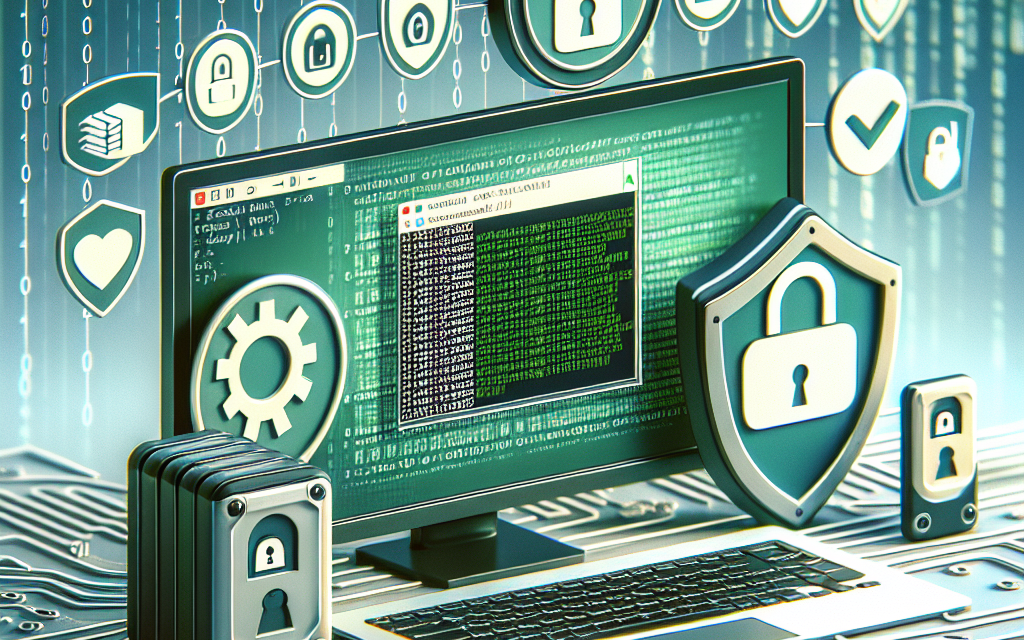Securing SSH Access with Multi-Factor Authentication on Linux Servers
As businesses and organizations increasingly rely on remote servers for their operations, ensuring secure access to these servers has never been more critical. SSH (Secure Shell) is the standard protocol for remote administration of Linux servers, but it can also be a target for malicious actors. To bolster security, implementing Multi-Factor Authentication (MFA) is an effective measure that adds an extra layer of protection. In this article, we will explore how to secure SSH access using MFA on Linux servers.
Understanding the Basics of SSH and MFA
SSH (Secure Shell) is widely used for securely accessing remote machines. It relies on a combination of public and private keys, usernames, and passwords for authentication. However, passwords can be vulnerable to brute-force attacks and phishing attempts.
Multi-Factor Authentication (MFA) is a security mechanism that requires users to provide multiple forms of identification before granting access. This typically involves something you know (a password), something you have (a mobile device or security key), and sometimes something you are (biometric identification).
Why Use MFA for SSH Access?
- Enhanced Security: Even if an attacker manages to obtain a user’s password, they would still need the second factor to gain access.
- Compliance Requirements: Many industries have regulations that require MFA for sensitive systems.
- Mitigation against Credential Theft: With phishing attacks on the rise, MFA provides an additional barrier against unauthorized access.
Prerequisites
Before implementing MFA with SSH, ensure the following are in place:
- A Linux server with SSH access.
- sudo privileges on the server.
- Google Authenticator or a similar MFA application installed on your mobile device.
Step-by-Step Guide to Enable MFA on SSH
Step 1: Install Required Packages
To enable MFA, we’ll use the libpam-google-authenticator package. Install this on your server with the following command:
sudo apt-get update
sudo apt-get install libpam-google-authenticatorStep 2: Configure the Google Authenticator
Run the following command to create a new 2FA token for your user:
google-authenticatorYou’ll see several prompts. Here’s what they mean:
- Do you want authentication tokens to be time-based? Enter
y. - Secret key: This will be your unique secret key. Make sure to note it down.
- Verification code: Input the code generated to verify.
- Emergency scratch codes: These are backup codes if you lose access to your Authenticator app.
You will also receive an option to update your .google_authenticator file. Keep this file secure, as it contains crucial authentication information.
Step 3: Update SSH Configuration
Open the SSH configuration file:
sudo nano /etc/ssh/sshd_configFind and modify the following lines:
ChallengeResponseAuthentication yesMake sure the following line is present (if not, add it):
UsePAM yesThis directs SSH to use PAM (Pluggable Authentication Modules) for authentication.
Step 4: Configure PAM
Edit the PAM configuration file for SSH:
sudo nano /etc/pam.d/sshdAdd the following line to the end of the file:
auth required pam_google_authenticator.soThis instructs PAM to require the Google Authenticator token for SSH logins.
Step 5: Restart SSH Service
After making your changes, restart the SSH service to apply the configuration:
sudo systemctl restart sshdStep 6: Test the Configuration
- Open a new terminal session and try to SSH into your server.
- You should be prompted for your regular username and password first.
- After entering the correct username and password, you’ll be prompted to enter the verification code from the Google Authenticator app.
Troubleshooting Tips
- Access Issues: If you encounter issues logging in, ensure you have backup access (such as a console or direct access).
- Incorrect Time Settings: MFA relies on time synchronization, so ensure your server time is accurate. Consider using NTP service for synchronization.
Conclusion
Implementing Multi-Factor Authentication for SSH access significantly strengthens the security posture of your Linux server. As cyber threats evolve, it is imperative for organizations to adopt robust methodologies to safeguard their infrastructure. By following this guide, you can enhance your server’s security and protect sensitive data from unauthorized access.
For more tech-savvy solutions and articles, stay tuned to WafaTech for the latest insights on cybersecurity and system administration!





